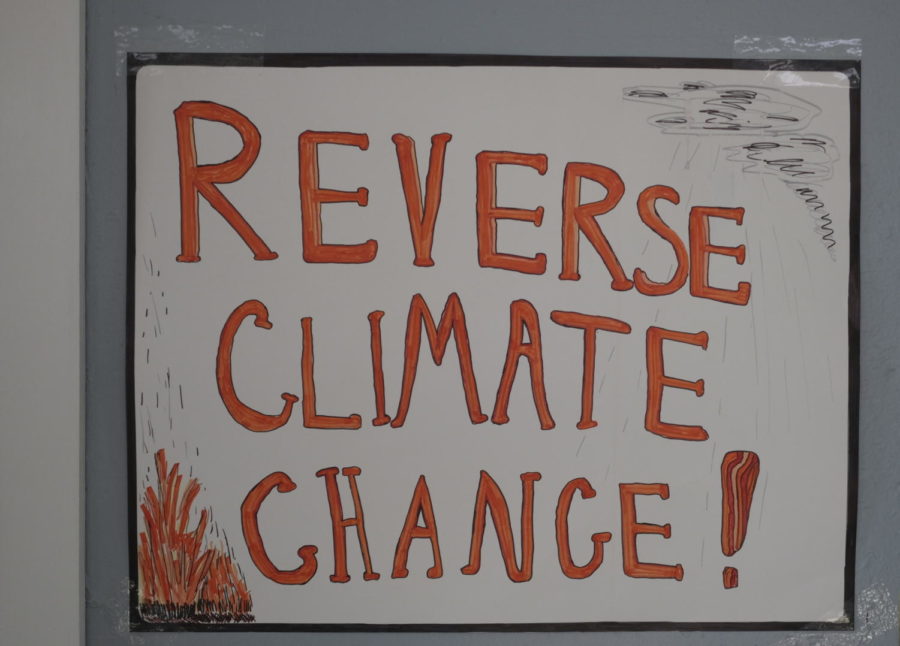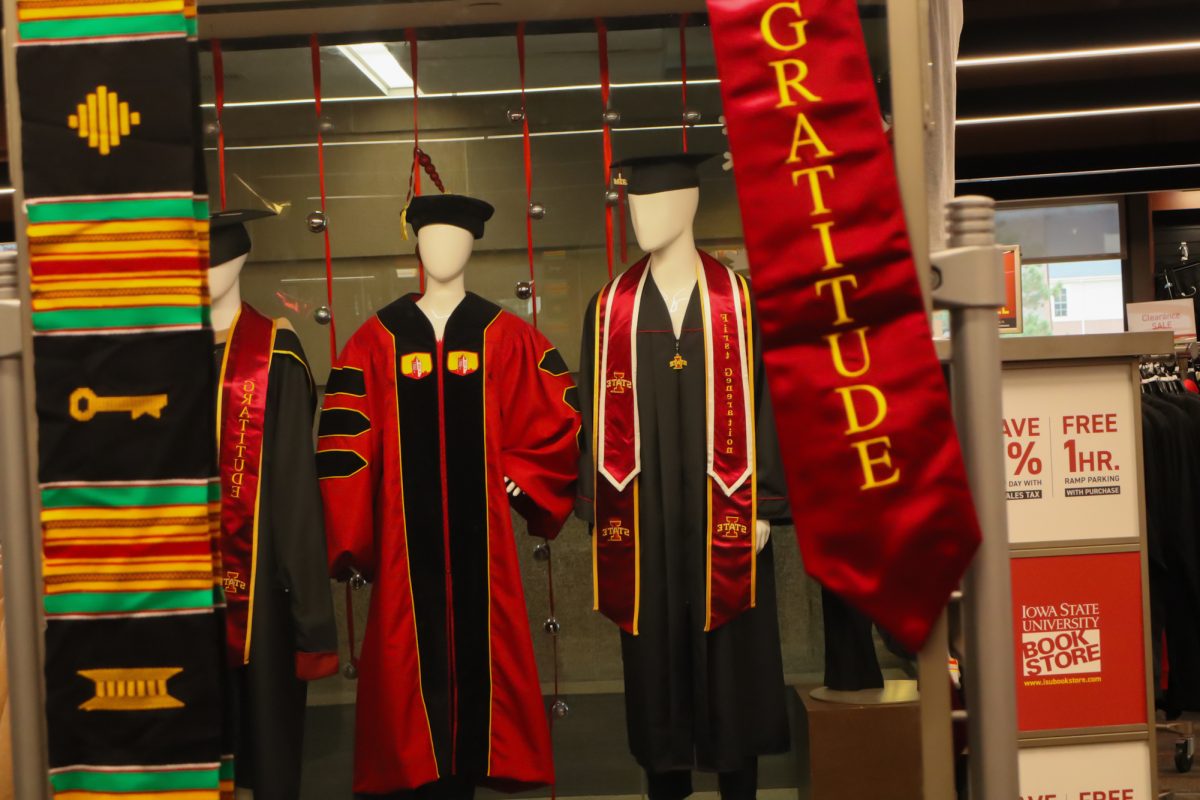The politics of climate change
January 31, 2020
On the horizon of the upcoming 2020 presidential election, climate change is at the forefront of top issues for many voters and candidates have declared their own positions on the issue as well as proposals to deal with the effects of climate change. According to NASA, climate change is defined as “a long-term change in the average weather patterns that have come to define Earth’s local, regional and global climates.”
The earth has seen extreme changes in weather events and the climate due to global warming, said Bill Gutowski, professor of meteorology at Iowa State. Gutowski’s research focuses on climate change and atmospheric dynamics in climate. Major population shifts, limited resources and climate refugees due to rising sea levels covering coastal land.
“The decisions we make now will have an impact on the future,” Gutowski said.
Parties are split when it comes to the issue of climate change. For Democrats and Democratic-leaning voters, 84 percent say that climate change is a major threat, while Republican and Republican-leaning voters it’s 27 percent, according to a 2019 study conducted by the Pew Research Center.
It can be a challenge to respond to the skepticism surrounding climate change science because people can exaggerate or distort the facts, Gutowski said. Older people may not believe that humans can change the climate of the planet, but younger people may have a different perspective on the role that they play.
In March, the U.N. held General Assembly meetings to discuss climate change. President María Fernanda Espinosa Garcés of Ecuador addressed the issue and said the last hope of change lies with the current generation and that there are 11 years left to avert catastrophe.
“The data suggests that we can get back to the [carbon levels] before the industrial revolution but it has to happen globally,” Dr. Danielle Wirth, adjunct faculty instructor for ecology courses at Iowa State University, said. “It can’t be one country or one group of people. It has to be us all.”
Greenhouse gases are gases in the Earth’s atmosphere that trap heat, which causes a greenhouse effect that makes life on Earth possible by buffering the planet from the cold of outer space, Wirth said. Excess amounts of greenhouse gases disrupt natural weather cycles and increases the Earth’s temperature.
Carbon is one of the primary greenhouse gases. Human actions such as burning organic materials and coal, using oil and removing trees have increased carbon levels in the atmosphere, thus warming the planet, Wirth said.
“Temperatures in India, for example, now approach 125 degrees Fahrenheit in the summer,” Wirth said. “The human body cannot tolerate those temperatures for very long without suffering from heat stroke.”
An increase in the Earth’s temperature has already caused increases in sea levels, destroying coastal communities and island inhabitants. Droughts contribute to the prolonging of wildfires and destroy crops. According to Wirth, the current species extinction is at rates similar to ones that occurred 65 million years ago at the close of the age of the dinosaurs.
“We’re losing species and ecological services that are essential for the survival of humans,” Wirth said.
Five mass extinctions throughout time, but the temperature changes haven’t caused mass extinctions in the past, said Dr. David Courarad-Hauri, professor of environmental science and sustainability at Drake University.
“In the past, creatures have migrated to follow changing temperature zones,” Courarad-Haurisaid. “But this time we may not get through it because of habitat fragmentation.”
According to Courarad-Hauri, habitat fragmentation describes the process of humans changing the topography of the landscape to develop land for homes, businesses or farming.
By changing the landscape, organisms that inhabit the land are separated and isolated, preventing seeds from dispersing to the temperatures they can handle and disrupting animal migration. According to Courarad-Hauri, habitat fragmentation is a result of industrialization.
“Industrialization was a great benefit to society in many ways,” Gutowski said. “But if you go back to the longer-term history and societies that learned to control certain types of energies they became prominent.”
Societies have a trend of using the most accessible and reliable sources of energy, such as petroleum and coal, but there is a price to it, Gutowski said. These resources emit the most greenhouse gases, leading to accumulating damage.
“We can’t say what we did was bad per se,” Gutowski said. “But ignoring the consequences of what we’re doing is bad.”
The effects of climate change are already present in many parts of the world and will continue to get worse, according to Gutowski.
“Twenty to thirty years from now, the planet will certainly be warmer,” Gutowski said. “What’s more important is that we’ve seen that there are changes in extreme events which is where weather and climate have their impact.”
One way to combat climate change is to implement new policies. According to Gutowski, policies directed toward having people emit fewer greenhouse gases by reducing the burning of fossil fuels and promoting alternative energy sources is a step in the right direction.
The Paris Agreement, a landmark agreement to combat climate change with a central aim to limit the Earth’s temperature increase to 1.5 degrees Celsius above pre-industrial levels, was signed by 175 parties and entered force on Nov. 4, 2016.
However, President Donald Trump announced the United States’ withdrawal from the agreement on June 1, 2017. The U.S. withdrawal from the Paris Agreement cannot take place before Nov. 4, 2020, making the upcoming 2020 presidential election crucial for both those for and against the agreement.
Rep. Alexandria Ocasio-Cortez of New York and Sen. Edward J. Markey of Massachusetts introduced the Green New Deal as a climate proposal.
“The Green New Deal is a proposed plan to combat climate change,” said Matt Ohloff, senior campaign organizer for Iowa Citizens for Community Improvement. “The policy hasn’t been written yet, but the goals have been outlined.”
These goals include 100 percent clean and renewable energy and zero net emissions by 2030, and creating jobs to ensure that the goal is met. As the United States phases out of fossil fuel consumption, the Green New Deal proposes a carbon tax to charge fossil fuel users for their contribution to climate damage and creating new jobs for former employees of fossil fuel companies.
Some Democratic candidates have adopted the Green New Deal as part of their plans of action for climate change, while other candidates have proposed different courses of action. The next elected president may have an impact on how the U.S. deals with climate change.
The director of the Office of Sustainability at Iowa State University, Merry Rankin, explains the role individuals play in what they want to see from candidates.
“Consider what your vision is for a sustainable future, and ask the candidates how they will be apart of ensuring how that will happen,” Rankin said.







